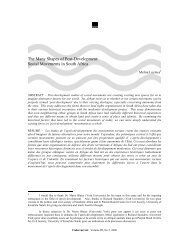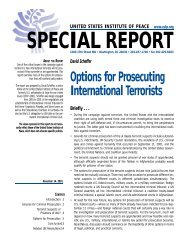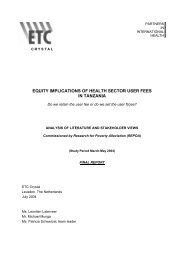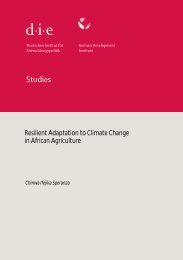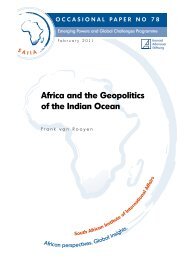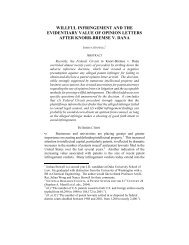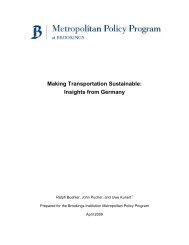Nord Stream: Not Just a Pipeline
Nord Stream: Not Just a Pipeline
Nord Stream: Not Just a Pipeline
You also want an ePaper? Increase the reach of your titles
YUMPU automatically turns print PDFs into web optimized ePapers that Google loves.
<strong>Nord</strong> <strong>Stream</strong>: <strong>Not</strong> <strong>Just</strong> a <strong>Pipeline</strong> 19<br />
The almost doubled price tag and the prospects of further cost increases,<br />
combined with <strong>Nord</strong> <strong>Stream</strong> AG’s persistence that the project shall and<br />
will be implemented, has made opponents of <strong>Nord</strong> <strong>Stream</strong> question<br />
whether there are political motivations involved that trump the economic<br />
ones. Rhetorically, they are asking why an onshore solution, which may<br />
be considerably cheaper, has not been chosen. Indeed, even states that are<br />
officially positive towards the project, such as Finland, have asked why<br />
the consortium in its Environmental Impact Assessment (EIA) has not<br />
considered any land-based alternatives. In its answer to the consortium’s<br />
Project Information Document of 2006, the Finnish Ministry of Foreign<br />
Affairs declared that:<br />
The project’s EIA programme and the affiliated ‘Project Information<br />
Document’ only propose a so-called ‘0-alternative’ or the<br />
alternative that no pipeline will be constructed as the alternative<br />
required by the EIA procedure. It would have been positive from<br />
the viewpoint of the EU solidary energy policy and development<br />
of the EU natural gas market to also take into account the interests<br />
of the other Baltic Sea states in planning of the project, either in<br />
the form of an alternative pipeline routing or in that of connections<br />
to any states interested’ (MFA Finland 2007: 1).<br />
A similar critique and call for alternatives can be found in corresponding<br />
official documents from Estonia, Lithuania, Poland and Sweden, as well<br />
as in statements from several non-governmental agencies in the Baltic<br />
Sea region (MFA Estonia 2006: 1; MoE Lithuania 2007: 1-2; MoE<br />
Poland 2007: 2; SEPA 2007: 2; <strong>Nord</strong> <strong>Stream</strong> 2008k). There are mainly<br />
two alternatives that have been proposed in this regard, namely, the<br />
Yamal 2 pipeline and the so-called Amber pipeline, both of which are<br />
illustrated in Figure 4.<br />
Figure 4: Alternative Onshore Routes –‘Yamal 2’ and ‘Amber’<br />
Source: Janeliunas & Molis (2005: 219). (Oval and ‘onshore section’ text added)<br />
The Yamal 1 pipeline currently brings natural gas from Russia via<br />
Belarus and Poland to Germany, and Yamal 2 is a proposed additional<br />
pipeline along the same route. Several commentators have claimed that






